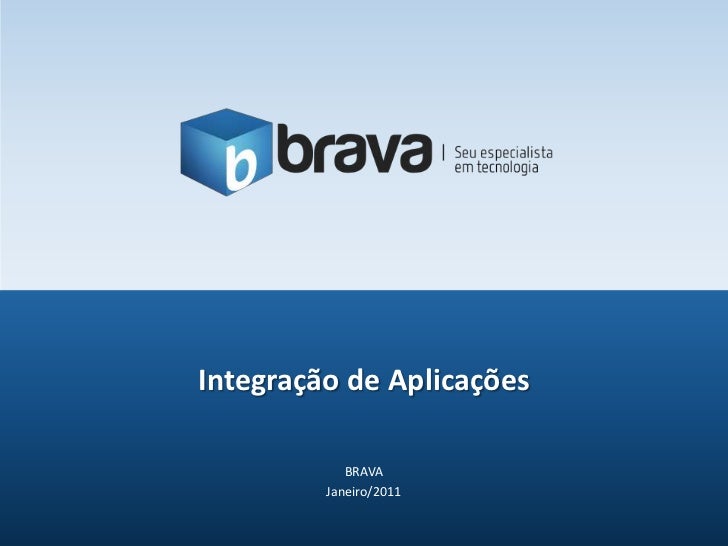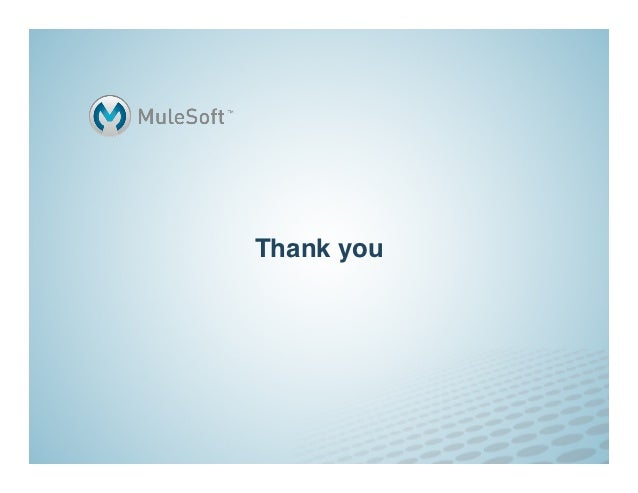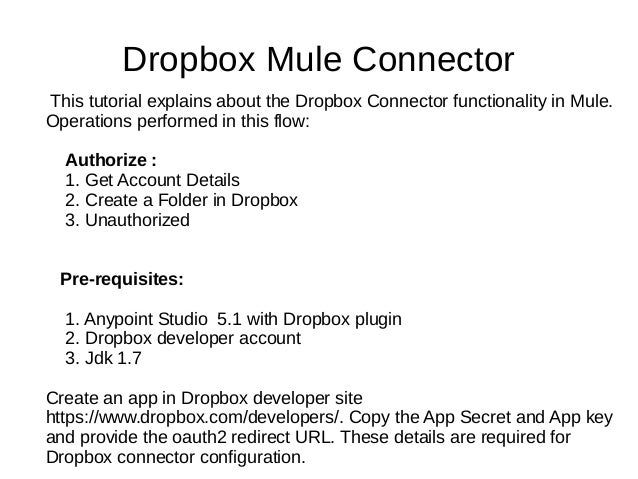Mule Esb Tutorial Ppt

What is Mule ESB? Mule, the runtime engine of Anypoint Platform, is a lightweight Java-based enterprise service bus (ESB) and that allows developers to connect applications together quickly and easily, enabling them to exchange data. It enables easy integration of existing systems, regardless of the different technologies that the applications use, including JMS, Web Services, JDBC, HTTP, and more. The can be deployed anywhere, can integrate and orchestrate events in real time or in batch, and has universal connectivity. The key advantage of an ESB is that it allows different applications to communicate with each other by acting as a transit system for carrying data between applications within your enterprise or across the Internet. Mule has powerful capabilities that include:. Service creation and hosting — expose and host reusable services, using the ESB as a lightweight service container.
Service mediation — shield services from message formats and protocols, separate business logic from messaging, and enable location-independent service calls. Message routing — route, filter, aggregate, and re-sequence messages based on content and rules. Data transformation — exchange data across varying formats and transport protocols Do I need an ESB? Mule and other ESBs offer real value in scenarios where there are at least a few integration points or at least 3 applications to integrate. They are also well suited to scenarios where loose coupling, scalability and robustness are required.
Mulesoft Esb Tutorial
Below is a quick ESB selection checklist. To read a much more comprehensive take on when to select an ESB, read this article written by MuleSoft founder and VP of Product Strategy Ross Mason:. Are you integrating 3 or more applications/services?
Nu foarte usor de gasit pe net, interesante, folositoare si la dispozitia voastra. Golf 3 prodaja. Fisierele se afla pe ftp: host: user: andreig-nl parola: vwforum Va rog nu abuzati de ftp, a fost pus la dispozitia noastra de catre un baiat de nota 10.Mai jos este o lista cu fisierele de pe ftp.
If you are looking to get started with Mule ESB quickly, we have lots of resources to get you moving. First off, you should be aware we have a free self-paced. Mulesoft ppt 1. M D 1 The Enterprise Service Bus Introduction using Mule Introduction to Open-Source ESB Authors: Achyuta Laxmi Date: Version.

Will you need to plug in more applications in the future? Do you need to use more than one type of communication protocol? Do you need message routing capabilities such as forking and aggregating message flows, or content-based routing?
Do you need to publish services for consumption by other applications? Mule is lightweight but highly scalable, allowing you to start small and connect more applications over time. The ESB manages all the interactions between applications and components transparently, regardless of whether they exist in the same virtual machine or over the Internet, and regardless of the underlying transport protocol used. There are currently several commercial ESB implementations on the market. However, many of these provide limited functionality or are built on top of an existing application server or messaging server, locking you into that specific vendor.
Mule is vendor-neutral, so different vendor implementations can plug in to it. You are never locked in to a specific vendor when you use Mule. Mule provides many advantages over competitors, including:. Mule components can be any type you want. You can easily integrate anything from a 'plain old Java object' (POJO) to a component from another framework. Mule and the ESB model enable significant component reuse.
Unlike other frameworks, Mule allows you to use your existing components without any changes. Components do not require any Mule-specific code to run in Mule, and there is no programmatic API required.
The business logic is kept completely separate from the messaging logic. Messages can be in any format from SOAP to binary image files. Mule does not force any design constraints on the architect, such as XML messaging or WSDL service contracts. You can deploy Mule in a variety of topologies, not just ESB. Because it is lightweight and embeddable, Mule can dramatically decrease time to market and increases productivity for projects to provide secure, scalable applications that are adaptive to change and can scale up or down as needed.
Mule's stage event-driven architecture (SEDA) makes it highly scalable. A major financial services company processes billions of transactions per day with Mule across thousands of Mule servers in a highly distributed environment. Mule Enterprise There are two editions of Mule: Community and Enterprise.

Enterprise is the enterprise-class version of the ESB, with additional features and capabilities that are ideal for production deployments of Mule that have requirements for performance, HA, resiliency, or technical support. Mule Community and Enterprise are built on a common codebase, so it is easy to upgrade from Community to Enterprise. Learn more about. Ready to get started?
If you are ready to get started today. By using MuleSoft brand materials, you agree to the MuleSoft Terms of Service, these MuleSoft branding guidelines, and all MuleSoft rules and policies, as may be updated from time to time.
You also acknowledge that MuleSoft is the sole owner of MuleSoft trademarks, promise not to interfere with MuleSoft’s rights in them, and acknowledge that goodwill derived from their use accrues only to MuleSoft. MuleSoft may review use of the branding materials at any time and reserves the right to terminate or modify any use.